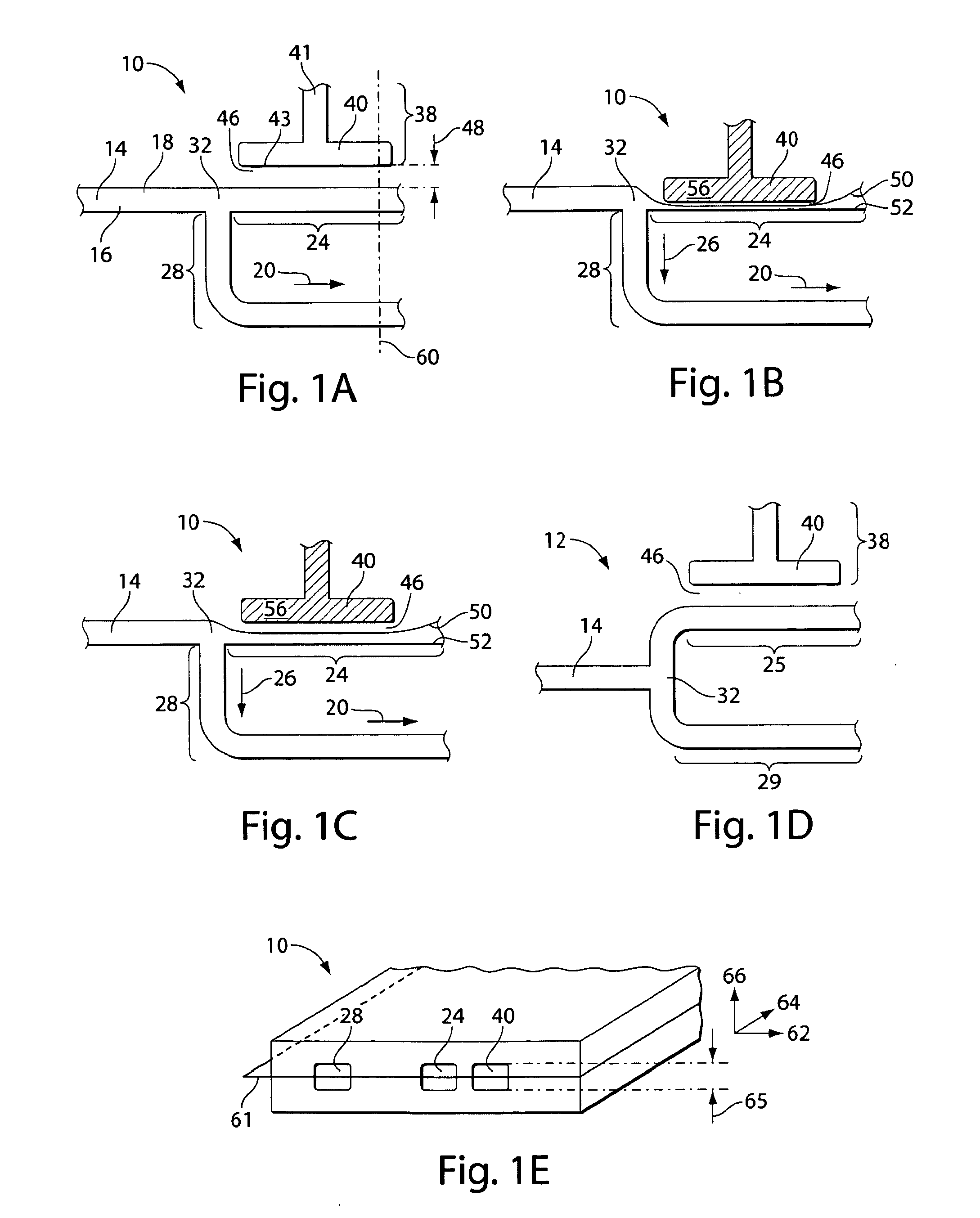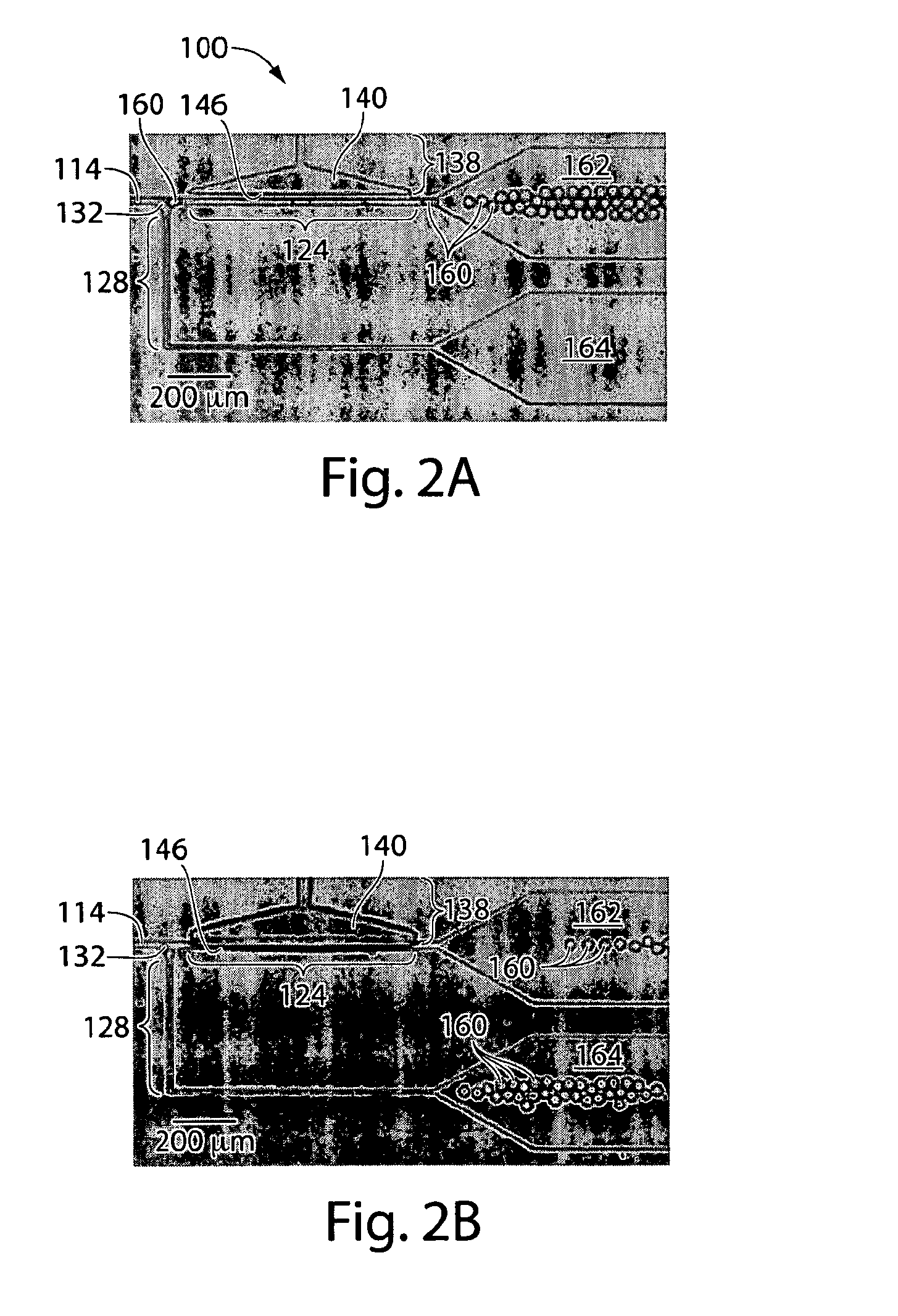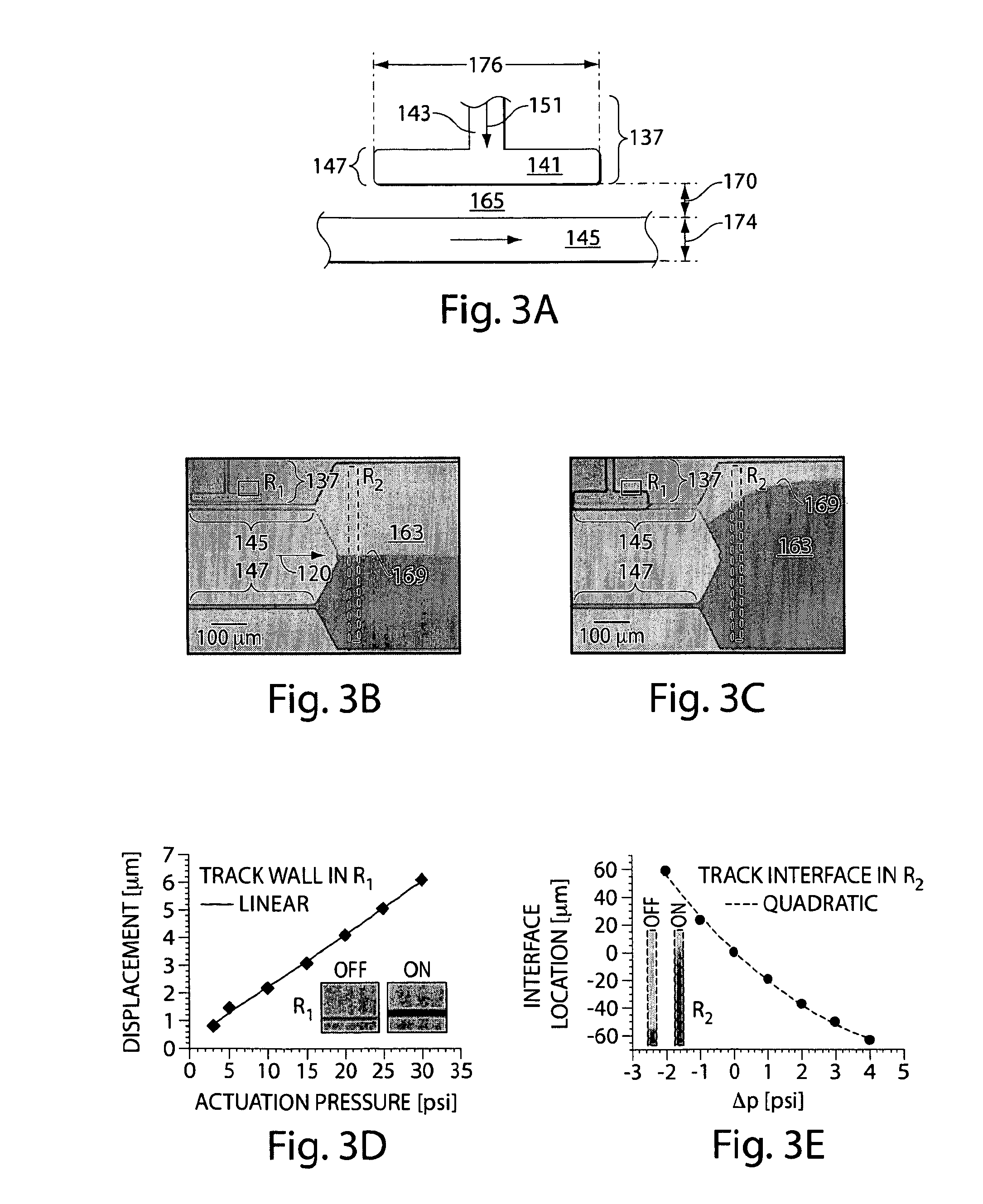Valves and other flow control in fluidic systems including microfluidic systems
a fluidic system and valve body technology, applied in the field of microfluidic systems, can solve the problems of large capital equipment, high cost, and/or complicated fabrication,
- Summary
- Abstract
- Description
- Claims
- Application Information
AI Technical Summary
Benefits of technology
Problems solved by technology
Method used
Image
Examples
example 1
Control of Single-Layer (e.g., “Planar') Valves
[0127]This example shows the control afforded by single-layer valves. FIG. 3A illustrates a top view of a single layer (e.g., “planar”) valve. To quantify the single-layer valve control, the pressure drop in the constricted channel was measured as a function of the actuation pressure applied to the valve channel. To measure the actuation pressure, fixed input pressure was applied to the fluid channel while varying the actuation pressure of the valve channel. This action deflected the elastic PDMS membrane, which was optically measured by tracking the wall in R1, as shown in FIGS. 3B-3C. This method provided measurements of the wall deflection as a function of the valve actuation pressure, which was used to calibrate the device. To extract a smooth calibration curve, the data were fit to a line, as shown in FIG. 3D. The calibration enabled the optical measurement of the pressure used to actuate the valve.
[0128]A microfluidic differential...
example 2
Performance of Single-Layer Valves
[0130]This example shows the effect of crosslinking density and channel dimensions on the pressure drop across a constricted channel as a function of the pressure used to actuate a valve constricting the channel.
[0131]Valves such as those shown in FIG. 3A-3C can control flow by constricting microchannels. The performance of a valve depends on the physical properties of both the valve and the channel to be deformed, which can be understood from the approximation for pressure-driven laminar flow in a high-aspect ratio channel: Δp∝vl / w3h; where Δp is the pressure drop along a microchannel (e.g., channel section 145 of FIG. 3A), v is the fluid flow rate, l is the channel length, w is the channel width, and h is the channel height, with w<<h. The approximation highlights the key properties of channel cross-sectional area and aspect ratio.
[0132]To determine the importance of the flexibility of a PDMS membrane (e.g., positioned between a control channel an...
example 3
Quantification of the Range and Precision of Rate Control Using Planar Valves
[0134]This example shows the operation of a continuous flow control microfluidic device in which the total flow rate through the device was 1000 μL / hr. To quantify the range and precision of flow rate control afforded by single-layer valves, the device shown in FIG. 5A was fabricated. The device included two parallel channels (e.g., channel section 182 and portions of channel section 184) that branch off from a delivery channel 181, with the flow rates along the channel sections being controlled using a valve 186. To use the device, the total flow rate through both channel sections was fixed at 1000 pL / hr using a syringe pump. When the valve was actuated, the flow rate in the channel section 182 was reduced while the flow rate in channel section 184 was increased. The velocity profiles for a sequence of actuation pressures was measured using Particle Imaging Velocimetry (Hy). For the PIV, 1 μm polystyrene t...
PUM
 Login to View More
Login to View More Abstract
Description
Claims
Application Information
 Login to View More
Login to View More - R&D
- Intellectual Property
- Life Sciences
- Materials
- Tech Scout
- Unparalleled Data Quality
- Higher Quality Content
- 60% Fewer Hallucinations
Browse by: Latest US Patents, China's latest patents, Technical Efficacy Thesaurus, Application Domain, Technology Topic, Popular Technical Reports.
© 2025 PatSnap. All rights reserved.Legal|Privacy policy|Modern Slavery Act Transparency Statement|Sitemap|About US| Contact US: help@patsnap.com



